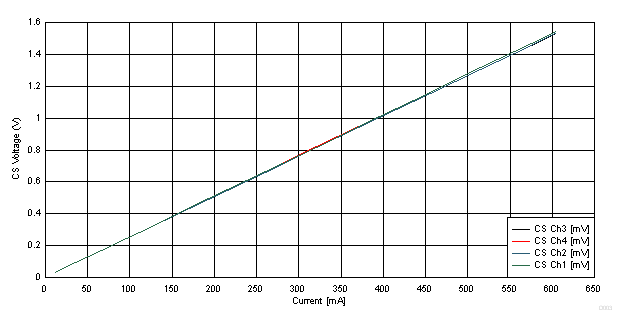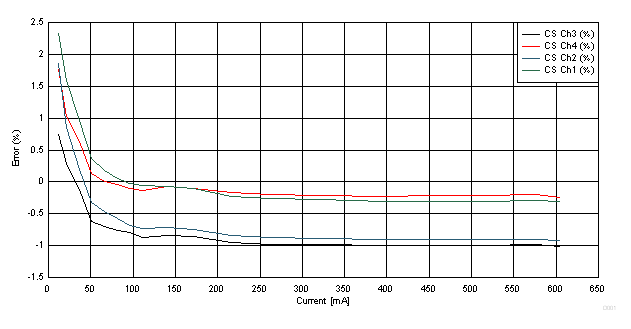TIDUEB8C July 2018 – March 2021 TPS274160
- Description
- Resources
- Features
- Applications
- 5
- 1System Description
- 2System Overview
- 3Hardware, Software, Testing Requirements, and Test Results
- 4Design Files
- 5Software Files
- 6Related Documentation
- 7About the Author
- 8Revision History
3.2.2.6 Current Sense on Each Port
To test the current sense of the TPS4H160 device, each channel is selected by setting the select pins accordingly, the device is powered with 24 V and every channel is loaded with an adjustable current sink. The current sense output is connected to a voltmeter. One channel at a time is tested and the results are plotted in Figure 3-12 and Figure 3-13.
 Figure 3-12 Output Voltage of TPS4H160 vs Current
Figure 3-12 Output Voltage of TPS4H160 vs Current Figure 3-13 Error of Current Measurement
Figure 3-13 Error of Current MeasurementThe error is calculated by converting the output voltage to a current: I[mA] = 300 / 768 × U × 1000. The error can than be calculated by E[%] = (ITPS – Iis) / Iis.